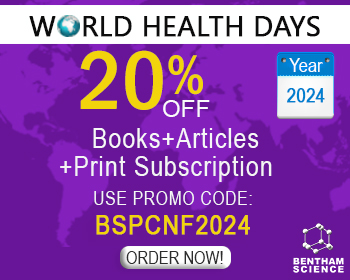Abstract
The discovery of the anticancer activity of cisplatin has marked the emergence of modern Inorganic Medicinal Chemistry. This field of research is concerned with the application of inorganic compounds to therapy or diagnosis of disease. In particular, metal coordination of bioactive ligands has gained recognition in drug design. The interaction between transition metal ions and the organic drugs could enhance their diagnostic and therapeutic potentials by improving the stability and/or bioavailability or by achieving a metal-drug synergism through a dual or multiple mechanisms of action. The isosteric replacement of sulfur by selenium in thiosemicarbazones leads to selenosemicarbazones. This class of compounds exhibits numerous biological activities like antitumor, antimicrobial, antiviral, etc. and, in most cases, they were more pronounced in comparison to the sulfur analogues. On the other hand, while the effect of transition metal complexation on the biological activity of thiosemicarbazones has been widely studied, the pharmacological activity of the corresponding metal-selenosemicarbazone compounds has been less explored. In this work, the most relevant results related to the selenosemicarbazone metal complexes as potential metal-based drugs have been reviewed.
Keywords: Selenosemicarbazone, metal-based drugs, antitumor, antimicrobial, antiparasitic, metal complexes.
[http://dx.doi.org/10.1089/ars.2009.2973] [PMID: 19905883]
[http://dx.doi.org/10.1002/iub.1466] [PMID: 26714931]
[http://dx.doi.org/10.1021/acschembio.6b00031] [PMID: 26949981]
[http://dx.doi.org/10.24820/ark.5550190.p009.784]
[http://dx.doi.org/10.1111/j.1365-2958.1991.tb00722.x] [PMID: 1828528]
[http://dx.doi.org/10.1186/gb-2005-6-8-r66] [PMID: 16086848]
[http://dx.doi.org/10.1016/S0021-9258(19)70024-6] [PMID: 7451465]
[http://dx.doi.org/10.1021/bi972177k] [PMID: 9521673]
[http://dx.doi.org/10.1016/S0021-9258(18)34271-6] [PMID: 6211447]
[http://dx.doi.org/10.1016/S0969-2126(99)80072-0] [PMID: 10378275]
[http://dx.doi.org/10.1074/jbc.M111.229807] [PMID: 21393246]
[http://dx.doi.org/10.1074/jbc.C110.106377] [PMID: 20388714]
[http://dx.doi.org/10.1039/c3cs60272a] [PMID: 24030774]
[http://dx.doi.org/10.1002/biof.5520100222] [PMID: 10609888]
[http://dx.doi.org/10.1111/j.1432-1033.1992.tb16983.x] [PMID: 1606960]
[http://dx.doi.org/10.3390/ijms18102209] [PMID: 29065468]
[http://dx.doi.org/10.1021/acs.jmedchem.9b01152] [PMID: 31638805]
[http://dx.doi.org/10.1016/j.arabjc.2017.11.017]
[http://dx.doi.org/10.1016/j.ejmech.2015.02.037] [PMID: 25752525]
[http://dx.doi.org/10.1099/0022-1317-67-8-1625] [PMID: 3016157]
[http://dx.doi.org/10.1021/jm00355a008] [PMID: 6338234]
[http://dx.doi.org/10.1039/c2md00283c]
[http://dx.doi.org/10.1016/j.ejmech.2015.12.040] [PMID: 26774036]
[http://dx.doi.org/10.1021/acs.jmedchem.5b01399] [PMID: 26645570]
[http://dx.doi.org/10.1016/j.jinorgbio.2007.07.026] [PMID: 17825917]
[http://dx.doi.org/10.1002/bscb.19560650707]
[http://dx.doi.org/10.1016/0039-9140(72)80242-X] [PMID: 18961229]
[http://dx.doi.org/10.1021/acs.jmedchem.8b01198] [PMID: 30543285]
[http://dx.doi.org/10.3987/COM-06-10725]
[http://dx.doi.org/10.1016/j.jorganchem.2010.03.029]
[http://dx.doi.org/10.1002/9781119640868.ch12]
[http://dx.doi.org/10.1016/j.ccr.2021.214104]
[http://dx.doi.org/10.1515/pac-2014-0504]
[http://dx.doi.org/10.1021/cr400460s] [PMID: 24456146]
[http://dx.doi.org/10.19080/CTOIJ.2019.14.555883]
[http://dx.doi.org/10.1016/j.chempr.2019.10.013] [PMID: 32864503]
[http://dx.doi.org/10.1080/00397911.2019.1649432]
[http://dx.doi.org/10.3390/ph13010004] [PMID: 31881715]
[http://dx.doi.org/10.1016/j.ccr.2008.07.004]
[http://dx.doi.org/10.1007/BF02703818]
[http://dx.doi.org/10.1016/j.inoche.2011.12.031]
[http://dx.doi.org/10.1016/j.poly.2016.07.016]
[http://dx.doi.org/10.1039/c0dt01693d] [PMID: 21380464]
[http://dx.doi.org/10.1016/j.poly.2007.03.023]
[http://dx.doi.org/10.2298/JSC130315035D]
[http://dx.doi.org/10.1039/C6MD00501B] [PMID: 30108695]
[http://dx.doi.org/10.1016/j.jinorgbio.2010.02.009] [PMID: 20356629]
[http://dx.doi.org/10.1007/s00706-014-1197-6]
[http://dx.doi.org/10.1039/C5RA19849F]
[http://dx.doi.org/10.1039/C6MD00199H]
[http://dx.doi.org/10.1016/j.ejmech.2008.07.033] [PMID: 18789831]
[http://dx.doi.org/10.1016/j.jorganchem.2011.12.027]
[http://dx.doi.org/10.1039/D0DT03465G] [PMID: 33185224]
[http://dx.doi.org/10.2174/1573406410666140327122009] [PMID: 24678785]
[http://dx.doi.org/10.1016/j.jscs.2020.10.006]
[http://dx.doi.org/10.1016/j.ejmech.2011.05.039] [PMID: 21641698]
[http://dx.doi.org/10.2174/187152012803529682] [PMID: 22583413]
[http://dx.doi.org/10.1016/j.ejmech.2005.01.006] [PMID: 15893020]
[http://dx.doi.org/10.1021/ja035737d] [PMID: 12914467]
[http://dx.doi.org/10.1016/j.ica.2009.04.047]
[http://dx.doi.org/10.1007/s11094-011-0631-x]
[http://dx.doi.org/10.1016/j.molstruc.2020.127876]
[http://dx.doi.org/10.1039/c1dt10885a] [PMID: 21879088]
[http://dx.doi.org/10.1016/j.nucmedbio.2004.10.004] [PMID: 15721760]



























